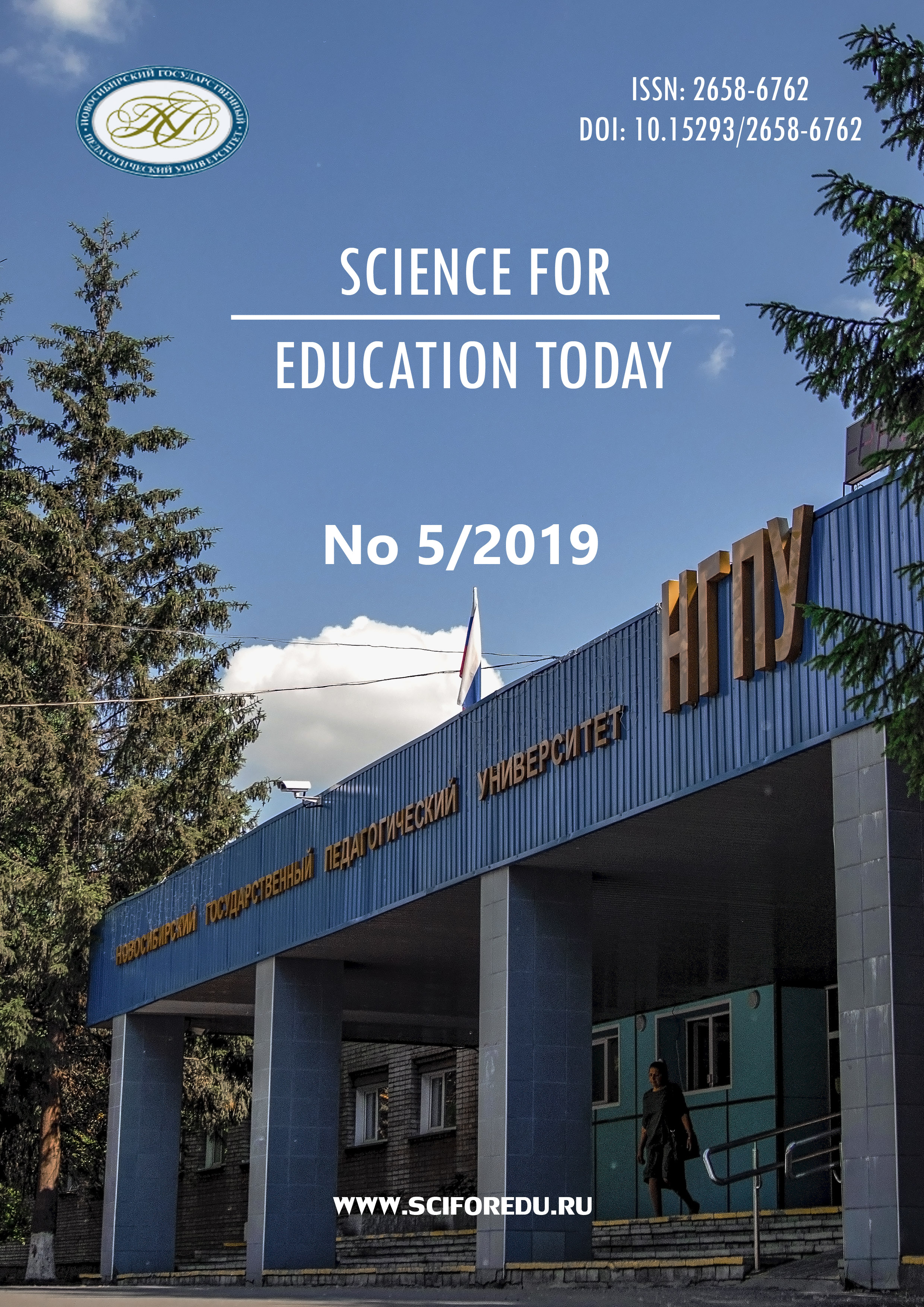Сравнительный анализ морфофункционального развития учащихся северного и южного регионов Казахстана как основа для мониторинга их здоровья в динамике обучения
Comparative analysis of schoolchildren’s morpho-functional development as the basis for health monitoring
(with the main focus on northern and southern Kazakhstan regions)
Author(s): Zhanat Makanovna Mukataeva, Aigul Salimzhanovna Dinmukhamedova, Roman Idelevich AizmanSubject(s): Developmental Psychology, Social development, Sports Studies
Published by: Новосибирский государственный педагогический университет
Keywords: Morpho-functional characteristics; Physical development; Cardiorespiratory system; Physical working capacity; Schoolchildren's health; Ethnic features
Summary/Abstract: Introduction. The deterioration of schoolchildren’s health which takes place in Kazakhstan has revealed the need for continuous children’s health monitoring within different climatic, geographical and environmental conditions. However, there is a lack of indicators of schoolchildren’s morpho-functional development for the Northern and Southern regions of Kazakhstan, which are relevant for making up-to-date health standard tables. In this regard, the aim of this research is to study children’s morpho-functional development in the Northern and Southern regions of Kazakhstan, for subsequent monitoring their health within the dynamics of learning. Materials and Methods. Participants of the study were 480 Kazakh schoolchildren from the Northern (No. 22 secondary school in Pavlodar) and Southern (No. 7 secondary school in Kyzylorda) regions aged between 12 and 17 years. 240 were female and 240 were male. The authors used standard generally accepted methods for determining the morphological indicators of physical development and functional indicators of the cardiorespiratory system at rest and after standard physical activities. The data were analyzed using the methods of variation and differential statistics. Results. The study has shown that all indicators of students' physical development are within age, gender and regional standards. However, a comparative assessment of morphological and functional indicators showed significant differences between the regions. All parameters of schoolchildren’s physical development, except height, were higher in all age groups in the Northern region. On the other hand, the representatives of the Southern region have shown better results concerning the functional parameters of the cardiovascular system, which indicated better physical endurance. Conclusions. The obtained data indicate the need for further research on children’s regional health characteristics and regional standards of morpho-functional development.
Journal: Science for Education Today
- Issue Year: 9/2019
- Issue No: 5
- Page Range: 126-142
- Page Count: 17
- Language: Russian

